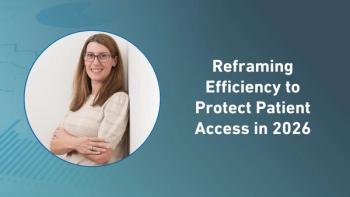
What Clinical Researchers Need to Know About Global Obesity Drug Development
Shipra Patel, global therapeutic area section head, endocrinology, global head, pediatrics, Parexel, discusses the importance of long-term patient retention, data accuracy, and AI-driven compliance tools in shaping the future of global obesity clinical trials.
In an interview with Applied Clinical Trials, Shipra Patel, global therapeutic area section head for endocrinology and global head of pediatrics at Parexel, discussed the evolving landscape of obesity drug development and what it takes to stand out in a field crowded with more than 90 active sponsors. Patel emphasized the importance of therapeutic depth, cross-functional collaboration, and the strategic use of real-world evidence to design safer, more effective clinical trials—particularly as GLP-1 therapies expand into new indications such as Alzheimer’s, addiction, and MASH. She also shared how Parexel is adapting its clinical infrastructure to meet the growing complexity of this space, while keeping long-term patient engagement and global data integrity at the forefront.
ACT: Looking ahead to 2050, what innovations in clinical research design or execution do you think will be most critical in ensuring obesity therapies are both safe and accessible at a global scale?
Patel: On a global scale, one of the biggest challenges will be keeping patients enrolled in clinical trials. We already place a strong emphasis on patient retention strategies, but it’s going to be even more important to identify what truly works—especially across different regions and populations—to ensure patients stay on these medications and remain in trials over the long term. That’s critical because many long-term safety effects of obesity therapies are still not well understood.
It will also be important to develop new ways of monitoring medication compliance—potentially using AI or other technologies—and to ensure that the data we collect is both accurate and meaningful. This will allow us to compare clinical trial results more effectively and identify which therapies are truly leading the field.
It’s a fascinating and fast-evolving space. We’re likely to learn a lot not just about induction therapies—those that help patients lose weight initially—but also about which treatments can maintain weight loss over time. But to uncover those insights, we’ll need to improve long-term retention. Many patients currently leave trials early, often due to gastrointestinal side effects or because they feel they’re not achieving meaningful weight loss. Addressing those barriers will be key.
Full Interview Summary: With more than 90 sponsors now driving obesity drug trials, standing out in this competitive space requires deep therapeutic expertise and cross-functional coordination. According to leaders at Parexel, the key differentiator for a standout research partner lies in a nuanced understanding of the evolving obesity drug market—particularly GLP-1 therapies. These compounds, initially developed for diabetes and obesity, are now being investigated for a broad range of indications including MASH, Alzheimer’s, addiction, Parkinson’s, and sleep apnea. To support this complexity, Parexel has implemented a GLP-1 task force—an internal expert group that helps clients stay competitive across the drug development lifecycle.
To handle GLP-1 trials spanning multiple therapeutic areas, Parexel relies on a therapeutically aligned model, connecting area leads across endocrinology, cardiology, psychiatry, and pulmonology. These cross-disciplinary teams collaborate to translate clinical trial learnings between indications and optimize study designs for similar mechanisms of action.
Real-world evidence (RWE) plays a central role in addressing the safety concerns linked to rising off-label GLP-1 use, even among patients with normal BMI. RWE shows many patients discontinue treatment early, often due to costs or tolerability issues—particularly gastrointestinal side effects. Flexible dosing, even below the maximum level, may still yield metabolic benefits, offering a new lens for trial design.
Parexel has leveraged RWE to identify non-traditional patient populations and refine trial protocols—for instance, by pinpointing regions with high use of GLP-1s to aid recruitment for switch-over studies. Looking ahead to 2050, long-term patient retention, better compliance tracking, and global data accuracy will be essential to compare therapies and identify long-term leaders in the obesity space. Innovations in AI and global patient engagement will be critical in sustaining participation and capturing meaningful safety outcomes.
Newsletter
Stay current in clinical research with Applied Clinical Trials, providing expert insights, regulatory updates, and practical strategies for successful clinical trial design and execution.




